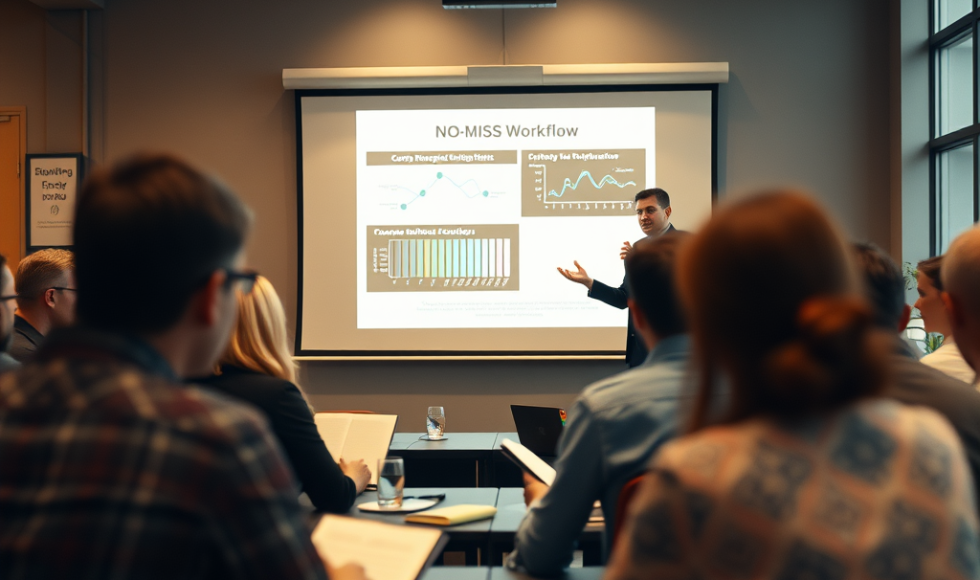Radhakrishna Tirumalai from Meck presented at the ONT Biopharma Day in Boston. The session, “Microbial identification in biopharma, ” focused on microbial identification methods in the biopharma industry. Tirumalai explained that analytical techniques can be appropriate in specific scenarios. For example, a microbial identification system may require precise identification at the genus or even strain […]
Helen Gunter from The BASE Facility of The University of Queensland in Australia presented at the ONT Biopharma Day. The session’s title was “Using nanopore sequencing for mRNA vaccine quality control: a journey from R&D to GMP.” They noted that since the COVID vaccines, there has been interest in synthetic mRNAs. Gunter spoke about the […]
Noah Bryan from the Bayview Secondary School in Canada presented at the Nanopore Community Meeting in Boston. The title of the five-minute session was “Is the water safe to drink/ The rapid test is the missing link!” Bryan is a sixteen-year-old student grade twelve student from Toronto, Canada. They developed a water test using the […]
Wanqing Shao from Boston Children’s Hospital presented at the Nanopore Community Meeting on “Maximizing the power of genomic sequencing in pediatric rare disease.” Shao is a Genomics Scientist working in a collaborative team: the Children’s Rare Disease Collaborative (CRDC). They are interested in rare and complex diseases that are often misdiagnosed. Shao also noted that […]
Nikhita Damaraju from the University of Washington in Seattle presented at the Nanopore Community Meeting in Boston. The session’s title was “Evaluating the quality of long-read phasing methods in clinically relevant genes.” They explained that variants are inherited in equal measure. Damaraju defined phasing as the process of assigning variants to parental copies. Understanding which […]
Tonight, I watched the second half of a new Knowledge Exchange session focusing on “Sequencing and analysis of nanopore-only microbial isolates with the NO-MISS workflow.” Different extraction methods produced varying yields. Bead-beating and enzymatic lysis extractions affect read length and throughput, while fungal samples produce lower yields. Some potential issues include incomplete lysis and contaminants. Additional clean-up […]
We hosted a bioinformatics workshop with Oxford Nanopore Technologies specialists! It was fun to learn about EPI2ME updates. Tonight, I watched the beginning of a new Knowledge Exchange session focusing on “Sequencing and analysis of nanopore-only microbial isolates with the NO-MISS workflow.” The webinar began with a review of the applications related to microbial isolate […]
Tonight I started watching a longer session from Oxford Nanopore Technologies (ONT) summer programming. “The era of complete genomes, at any scale” was the title of a session Cora Vaher gave. They described how long-read sequencing with ONT has changed sequencing. Vaher stated that “the era of full genomes is coming” because there are many […]
As we prepare for the start of a new semester, I decided to watch a Masterclass from London Calling 2024. Akelia Wauchope-Odumbo, Associate Director Technical Applications—Americas with Oxford Nanopore Technologies, presented on experimental design. The session title was “How to get started with nanopore sequencing and plan your experiment.” The masterclass series guides users from “sample to […]
Trish Simner is the Director of Bacteriology and Infectious Disease Sequencing Laboratories. They work at the Johns Hopkins University School of Medicine in Baltimore, Maryland. They presented at London Calling 2024. The session’s title was “Bringing Nanopore Sequencing into the Clinical Microbiology Setting with Targeted Approaches.” Simner spoke about the advantages of long reads and […]










